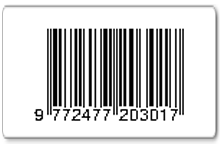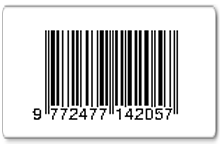Integrating Islamic Values into a Science Comic Book as an Instructional Media
Abstract
This study examined the validity of a science comic book integrated with Islamic values. The development of the book followed the steps of ADDIE (Analyze, Design, Develop, Implement, and Evaluate). The product was validated by an expert in Islamic studies, an expert in instructional media, an expert in instructional material, and a science teacher. A questionnaire was used to obtain data validation results. The expert validation results showed a score of 3.8 for the integrated Islamic values, 3.5 for the material, 3.5 for the book function as instructional media, and 3.7 for the product practicality, with all scores falling into the "very valid" category. At the implementation stage, the book was tried on a student individual, a small group of students, and a larger group of students to conduct practicality of the product from students’ responses. The students’ responses showed scores of 86.25% (individual trials), 84.44% (small-group trials), and 85.94% (large-group trials), with all scores falling into the very good category. These results indicate that the science comic book integrated with Islamic values can be implemented in the science classroom. At the evaluation stage, formative evaluation was conducted. It collects expert suggestions to revise a comic
Keywords
Full Text:
PDFReferences
Adegbija, MV. & Fakomogbon, MA 2012, ‘Instructional media in teaching and learning: A Nigerian Perspective’, Global Media Journal African Edition, vol. 6, no.2, pp. 216–230. https://doi.org/10.5789/6-2-114.
Affeldt, F, Meinhart, D, & Eilks, I 2018, ‘The Use of Comics in Experimental Instructions in a Non-formal Chemistry Learning Context’, International Journal of Education in Mathematics, Science and Technology, vol. 6, no. 1, pp. 93–104. https://doi.org/10.18404/ijemst.380620.
Aiken, KG 2010, ‘Superhero History: Using Comic Books to Teach U.S. History’, OAH Magazine of History, vol. 24, no. 2, pp. 41–47. https://doi.org/10.1093/maghis/24.2.41.
Akcanca, N 2020, ‘An alternative teaching tool in science education: Educational comics’, International Online Journal of Education and Teaching (IOJET), vol. 7, no. 4, pp. 550–1570.
Almeida, H 2017, ‘From comics to biology diagrams: structure and inference in visual narratives of transformation’, Visual Communication, vol. 16, no. 1, pp. 85–108. https://doi.org/10.1177/1470357216668694.
Aşci, AU 2020, ‘Examining the comic strips which takes places on the texts on secondary school Turkish language course books in terms of education of values’, Journal of International Social Research, vol. 13, no. 69, pp. 868–889. https://doi.org/10.17719/jisr.2020.4006.
Astuti, TMP, Kismini, E & Prasetyo, KB 2014, ‘The Socialization Model of National Character Education for Students in Elementary School Through Comic’, KOMUNITAS: International Journal of Indonesian Society and Culture, vol. 6, no. 2, pp. 260–270. https://doi.org/10.15294/komunitas.v6i2.3305.
Bahri, A & Corebima, AD 2015, ‘The Contribution of Learning Motivation and Metacognitive Skill On Cognitive Learning Outcome of Students Within Different Learning Strategies’, Journal of Baltic Science Education, vol. 14, no. 4, 487–500. https://doi.org/10.33225/jbse/15.14.487
Basu, R 2018, ‘Instructional Design Models: Benefits and Challenges’, UGC Approved Journal, vol. 41, no. 2249, pp. 31–36
Branch, RM 2009, Instructional Design: The ADDIE Approach, Springer US, Boston, MA. https://doi.org/10.1007/978-0-387-09506-6.
Chai, CL 2019, ‘Enhancing visual literacy of students through photo elicitation’, Journal of Visual Literacy, vol. 38, no. 1–2, pp. 120–129. https://doi.org/10.1080/1051144X.2019.1567071.
Chung, BS & Chung, MS 2018, ‘Homepage to distribute the anatomy learning contents including Visible Korean products, comics, and books’, Anatomy & Cell Biology, vol. 51, no. 1, pp. 7-13. https://doi.org/10.5115/acb.2018.51.1.7.
Cimermanová, I 2015, 'Using Comics with Novice EFL Readers to Develop Reading Literacy', Procedia - Soc. Behav. Sci, vol. 174, pp. 2452–2459. https://doi.org/10.1016/j.sbspro.2015.01.916
Goldenberg, MDF 2016, ‘Comics: A Step toward the Future of Medicine and Medical Education?’, Ear, Nose & Throat Journal, vol. 95, no. 6, pp. 204–205. https://doi.org/10.1177/014556131609500602.
Hamza Taha, SM & Hassan El-Sayed, RES 2021, ‘Effect of an Educational Comic Story about Preoperative Orientation on Information and Anxiety Level of Children Undergoing Surgery’, Clinical Nursing Research, vol. 30, no. 6, pp. 771–779. https://doi.org/10.1177/1054773821994851.
Hands, T, Shaw, A, Gibson, M, Miller, K 2018, ‘People and their plants: The effect of an educational comic on gardening intentions’, Urban Forestry & Urban Greening. Vol. 30, pp. 132–137. https://doi.org/10.1016/j.ufug.2018.01.017
Jee, BD & Anggoro, FK 2012, ‘Comic Cognition: Exploring the Potential Cognitive Impacts of Science Comics’, Journal of Cognitive Education and Psychology, vol. 11, no. 2, pp. 196–208. https://doi.org/10.1891/1945-8959.11.2.196.
Jessani, SI 2015, ‘Science Education: Issues, Approaches and Challenges’, Journal of Education and Educational Development, vol. 2, no. 1, pp. 79-87. https://doi.org/10.22555/joeed.v2i1.51.
Kasim, TSAT & Yusoff, YM 2014, ‘Active Teaching Methods: Personal Experience of Integrating Spiritual and Moral Values’, Religious Education, vol. 109, no. 5, pp. 554–570. https://doi.org/10.1080/00344087.2014.956560.
Kearns, C & Kearns, N 2020, ‘The role of comics in public health communication during the COVID-19 pandemic’, Journal of Visual Communication in Medicine, vol. 43, no. 3, pp. 139–149. https://doi.org/10.1080/17453054.2020.1761248.
Koutníková, M 2017, ‘The Application of Comics in Science Education’, Acta Educationis Generalis, vol. 7, no. 3, pp. 88–98. https://doi.org/10.1515/atd-2017-0026.
Lee, TI, Sheu, SJ, Chang, HC, Hung, YT, Tseng, LM, Chou, SS, Liang, TH, Liu, HJ, Lu, HL, Chen, MC, Liu, YC, Tsai, CS & Sun, JC 2019, ‘Developing a Web-Based Comic for Newly Diagnosed Women With Breast Cancer: An Action Research Approach’, Journal of medical Internet research, vol. 21, no. 2, e10716. https://doi.org/10.2196/10716
Lickona, T 2009, Educating for character: how our schools can teach respect and responsibility, Bantam, New York.
Lickona, T 2012, Character matters (persoalan karakter): bagaimana membantu anak mengembangkan penilaian yang baik, integritas, dan kebajikan penting lainnya. Bumi Aksara, Jakarta.
Lin, SF, Lin, H, Lee, L, Yore, LD 2015, 'Are Science Comics a Good Medium for Science Communication? The Case for Public Learning of Nanotechnology', Int. J. Sci. Educ. Part B, vol. 5, pp. 276–294. https://doi.org/10.1080/21548455.2014.941040
Lubis, MA 2018. ‘Pengembangan bahan ajar komik untuk meningkatkan minat baca PPKN siswa MIN Ramba Padang Kabupaten Tapanuli Selatan’. Jurnal Tarbiyah, vol. 25, no. 2, pp. 152–173. https://doi.org/10.30829/tar.v25i2.370.
Mamolo, LA & Wang, S 2019, ‘Development of digital interactive math comics (DIMaC) for senior high school students in general mathematics’, Cogent Education. vol. 6, no. 1, p. 1689639. https://doi.org/10.1080/2331186X.2019.1689639.
Mansour, N 2011, 'Science teachers’ views of science and religion vs. the Islamic perspective: Conflicting or compatible?: Science and Religion vs. the Islamic Perspective', Sci. Educ. vol. 95, pp. 281–309. https://doi.org/10.1002/sce.20418
Mioramalala, SA, Bruand, PE, Ratsimbasoa, A, Rafanomezantsoa, RM, Raharinivo, MM, Vincent, C, Preux, PM, Boumédiène, F, Raharivelo, A 2021, 'Effects of an educational comic book on epilepsy-related knowledge, attitudes and practices among schoolchildren in Madagascar', Epilepsy Res. vol. 176, p. 106737. https://doi.org/10.1016/j.eplepsyres.2021.106737
Morel, M, Peruzzo, N, Juele, AR & Amarelle, V 2019, ‘Comics as an Educational Resource to Teach Microbiology in the Classroom’, Journal of Microbiology & Biology Education, vol. 20, no. 1, pp. 1-4. https://doi.org/10.1128/jmbe.v20i1.1681
Ntobuo, NE, Arbie, A & Amali, LN 2018, ‘The Development of Gravity Comic Learning Media Based on Gorontalo Culture’, Jurnal Pendidikan IPA Indonesia, vol. 7, no. 2, pp. 246–251. https://doi.org/10.15294/jpii.v7i2.14344.
Nursamsu, N & Baihaqi, B 2016, ‘Implementasi Kurikulum 2013 Bagi Guru SMA Negeri Aceh Tamiang’, Jurnal Pendidikan Biologi, vol. 5, no. 3, pp. 193–199. https://doi.org/10.24114/jpb.v5i3.4320
Osborne, J & Collins, S 2001, ‘Pupils’ views of the role and value of the science curriculum: A focus-group study’, International Journal of Science Education, vol. 23, no. 5, pp. 441–467. https://doi.org/10.1080/09500690010006518.
Pinheiro, AC, Sequeira, SO, Pousada, R 2020, 'Communicating science: The making of a comics poster on biodeterioration', Int. Biodeterior. Biodegrad. vol. 155, pp-105092. https://doi.org/10.1016/j.ibiod.2020.105092
Pribadi, BA 2009, Model Desain sistem Pembelajaran. Dian Rakyat, Jakarta.
Purwati, N, Zubaidah, S, Corebima, AD & Mahanal, S 2018, ‘Increasing Islamic Junior High School Students Learning Outcomes through Integration of Science Learning and Islamic Values’, International Journal of Instruction, vol. 11, no. 4, pp. 841–854. https://doi.org/10.12973/iji.2018.11453a
Ramadhani, DT, Yasa, AD & Suastika, IK 2021, ‘Pengembangan media pembelajaran e-komik sistem pencernaan pada manusia untuk siswa kelas V’, Rainstek Jurnal Terapan Sains dan Teknologi, vol. 3, no. 4, pp. 342–346. https://doi.org/10.21067/jtst.v3i4.6538.
Ronan, LK & Czerwiec, MK 2020, ‘A Novel Graphic Medicine Curriculum for Resident Physicians: Boosting Empathy and Communication through Comics’, Journal of Medical Humanities, vol. 41, no. 4, pp. 573–578. https://doi.org/10.1007/s10912-020-09654-2.
Sadera, JRN, Torres, RYS & Rogayan, DV 2020, ‘Challenges Encountered by Junior High School Students in Learning Science: Basis for Action Plan’, Universal Journal of Educational Research, vol. 8, no. 12A, pp. 7405–7414. https://doi.org/10.13189/ujer.2020.082524.
Sahaat, Z, Nasri, NM & Abu Bakar, AY 2020, ‘ADDIE Model In Teaching Module Design Process Using Modular Method: Applied Topics in Design And Technology Subjects’, in Proceedings of the 1st Progress in Social Science, Humanities and Education Research Symposium (PSSHERS 2019). 1st Progress in Social Science, Humanities and Education Research Symposium (PSSHERS 2019), Padang, Indonesia: Atlantis Press, pp. 719-724. https://doi.org/10.2991/assehr.k.200824.161.
Saputra, A & Azka, R 2020, ‘Pengembangan komik matematika untuk memfasilitasi kemampuan pemahaman konsep dan motivasi belajar siswa SMP’, Jurnal Pengembangan Pembelajaran Matematika (JPPM SUKA), vol. 2, no. 2, pp. 89–97.
Scavone, P, Carrasco, V, Umpiérrez, A, Morel, M, Arredondo, D & Amarelle, V 2019, ‘Microbiology can be comic’, FEMS Microbiology Letters, vol. 366, no. 14, fnz171. https://doi.org/10.1093/femsle/fnz171
Subakir, A 2020, ‘Integrating Islamic Education Based Value: Response to Global Challenges and Socio-Environment’, IOP Conference Series: Earth and Environmental Science, 469(1), p. 012106. https://doi.org/10.1088/1755-1315/469/1/012106.
Suparjo, Hanif, M & Indianto, DS 2021, ‘Developing Islamic science based integrated teaching materials for Islamic religious education in Islamic high schools’, Pegem Journal of Education and Instruction, vol. 11, no. 4, pp. 282–289. https://doi.org/10.47750/pegegog.11.04.27.
Tatalovic, M 2009, ‘Science comics as tools for science education and communication: a brief, exploratory study’, Journal of Science Communication, vol. 08, no. 04, p. A02. https://doi.org/10.22323/2.08040202.
Toh, TL, Cheng, LP, Jiang, H & Lim, KM 2016, ‘Use of Comics and Storytelling in Teaching Mathematics’, In Developing 21st Century Competencies in the Mathematics Classroom (pp. 241–259). Hongkong: World Scientific. https://doi.org/10.1142/9789813143623_0013
Versaci R 2008, ‘Literary literacy’ and the role of the comic book;, In: N Frey & D Fisher (eds) Teaching Visual Literacy: Using Comic Books, Graphic Novels, Anime, Cartoons, and More to Develop Comprehension and Thinking Skills. Thousand Oaks, CA: Corwin Press, pp. 91–111.
DOI: http://dx.doi.org/10.30870/jppi.v9i1.19167
Refbacks
- There are currently no refbacks.
Copyright (c) 2023 Jurnal Penelitian dan Pembelajaran IPA

This work is licensed under a Creative Commons Attribution 4.0 International License.
Jurnal Penelitian dan Pembelajaran IPA is licensed under a Creative Commons Attribution 4.0 International License
Copyright © 2025 Jurnal Penelitian dan Pembelajaran IPA. All rights reserved.






